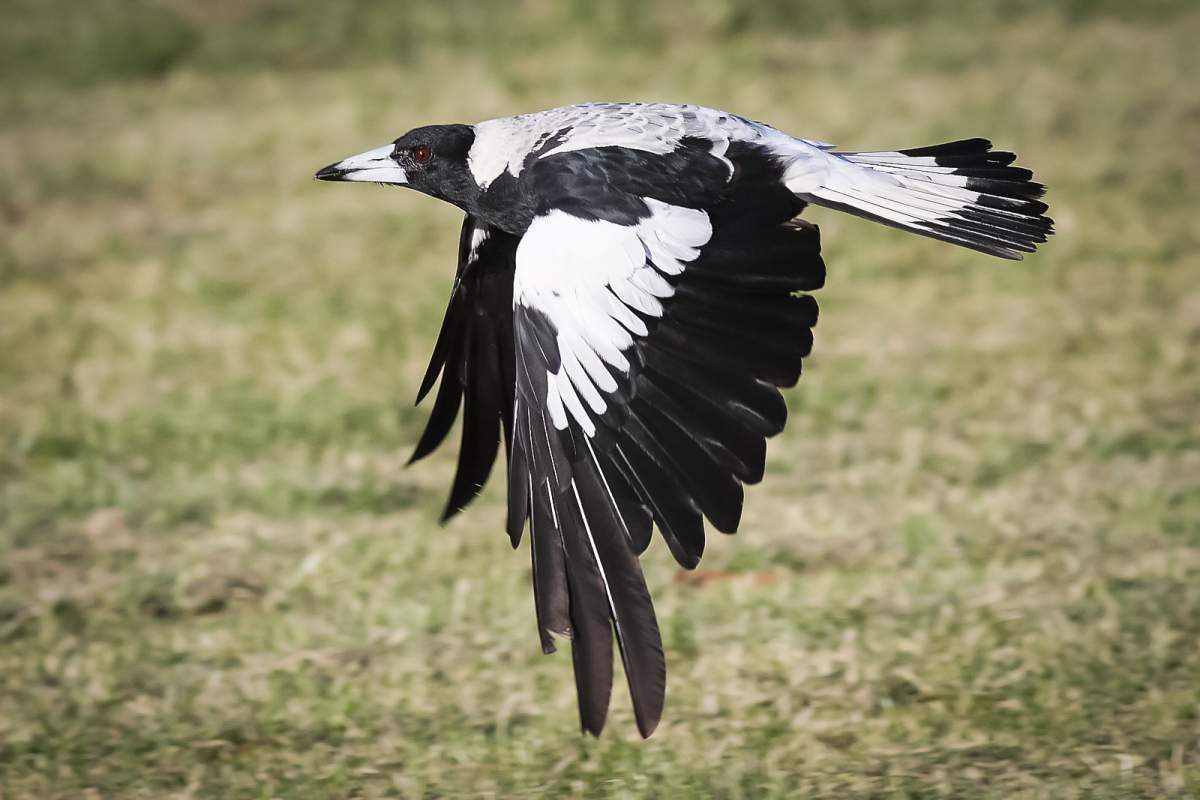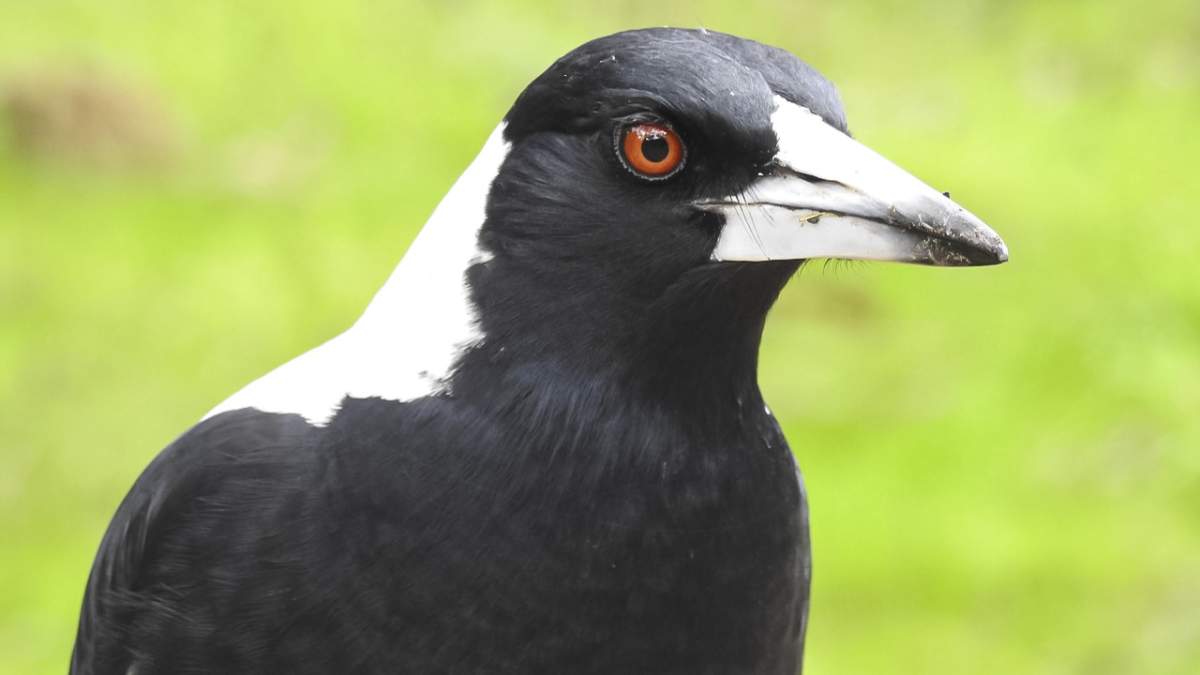
Marauding Magpies!
How to avoid the menace of swooping magpies this spring.
Magpies are nature’s stealth bombers.
If you’re lucky, you may just hear the unmistakable whoosh of wings or see a shadow swooping in from behind giving just the merest of warnings before the airborne assault begins.
This might sound like the plot line from Alfred Hitchcock’s 1936 horror-film The Birds, but each spring, cyclists on rural roads and trails across New Zealand and Australia are subject to an aerial assault from territorial magpies protecting their nests. To the unsuspecting rider this can cause quite the fright.
Magpies were introduced to New Zealand from Australia in the 1860s to control insect pests on farmland, but as with so many introduced species they’ve now become a pest themselves (although they’re protected in their native Australia). Two sub-species were introduced to NZ, the white-backed and the black-backed magpie. Crossbreeding has since occurred, and they’re now considered one species.
Magpies are widespread throughout the Otago region. They prefer open pasture areas with nearby tall trees for roosting and nesting. Unfortunately, many of the Otago cycle trails pass through countryside with exactly this habitat, and one infamous section of the Otago Central Rail Trail has even earned the ominous nickname of “Magpie Alley”!
(The photo to the right is the Magpie Alley Talley Board at the Waipiata Country Hotel on the Otago Central Rail Trail which keeps track unfortunate victims)!
Magpies are extremely territorial birds and can be a considerable nuisance during the breeding season by swooping on and occasionally attacking people, especially cyclists, which they see as a threat. In New Zealand, numerous ACC claims are filed each year as a result of magpie attacks! The aerial assault is a defence mechanism by the male magpie which is protecting its offspring.
The birds almost always mug their victims from behind and seem particularly attracted to fast moving objects. Perhaps a cyclist’s helmet in some way resembles a predator such as a hawk or a competing male magpie?
Thankfully this bird blitz is a relatively short-lived occurrence during the spring breeding season and usually finishes once the magpie chicks have fledged the nest. September to November is generally the peak pecking period.
So, what to do if one does sneak up on you from behind or you inadvertently ride into enemy territory?

Otago multisport legend and endurance coach Dougal Allan has plenty of experience fending off magpies! Dougal reckons that “most problems arise from people riding off the trail or into something as they deviate their line while being distracted by the sky demons. I’d really encourage my fellow riders to try focus on holding a straight line and looking where they’re going so that they don’t ride off the track or into oncoming traffic. A small bite mark in the helmet beats a head on collision any day”!
Dougal is also keen to point out that it wasn’t the magpies which influenced his recent career change from multisport to sailing. He was one of Team New Zealand’s cyclors which won the America’s Cup in Barcelona in 2024. (You can read more about Dougal's transition from multisport to sailing here).

Dougal Allan avoids a swooping magpie on a bike ride.
Six Tips to Out Manoeuvre the Magpies
1. Eyes in the back of your head
Magpies usually divebomb from behind, but they are much less likely to swoop if they are being watched directly. If you maintain eye contact with a magpie for as long as possible, it will be less likely to swoop. Some cyclists draw a pair of ‘eyes’ and attach these to the back of their helmets to give the impression that they have eyes in the back of their head. There are even anti-swooping eye stickers available on the internet as magpie deterrents. Some cycle jerseys have graphics depicting owls and other predatory birds on their back which appear to stare back at the magpie aggressors.
2. Get off your bike
If you are on a bicycle, dismount. Bicycles irritate magpies and getting swooped while riding can cause accidents. As per Dougal’s advice, your helmet will protect you. Walk the bike quickly and calmly out of the magpie’s territory. “They get more infuriated if you flap your arms and swing around, so best to act calm and walk away," advises Otago University Zoology Associate Professor Yolanda van Heezik.
Magpies have also been shown to have incredible memories and can recognise up to 100 individual faces. So, it pays not to harass them, especially if you’re a local that rides the same trail regularly!

The magpie was introduced to NZ from Australia to control insect pests on farmland. (Photo: Flagstaffoto).

Always watching!.... (Photo: Kim Tarpey)
3. Know the swooping hotspots
The best way to protect yourself from a swooping bird is to avoid venturing into their territory, but this is not always possible or practical. So, check out local Facebook cycle groups for the latest magpie memos or talk to local bike shops or cycle tour operators.
In Australia there is even a Magpie Alert website with a regularly updated ‘Swooping Map’ which geotags magpie hotspots! In NZ, Radio Hauraki also published a Magpie Attack Map on their Facebook page a few years ago.
4. Cover your head
For walkers on the trails, wear a hat or carry a stick or hiking pole above your head. Cyclists should all be wearing a helmet which offers protection, but a good tactic is to dismount and walk through the area.
Many cyclists cover their helmets in zip ties to try and deter the aerial bombardment, and there is huge debate on the internet as to whether this tactic works or not. We’ll leave it up to you to decide if you want to try this approach!
5. Safety in Numbers
If possible, try to travel in a group in areas where there are swooping birds.
6. Notify others
Let other trail users know if you encounter aggressive magpies and inform the local trail manager or council so they can provide warning signs. For example, last swooping season Central Otago District Council posted "beware of the magpies" updates on their website as well as installing signage.


Related Stories
-

Otago Central Rail Trail Pub Guide
A guide to the pubs along the Otago Central Rail Trail
Read more about Otago Central Rail Trail Pub Guide -

Best Bakeries in Otago
From cinnamon scrolls to cheese rolls - a guide to the best trailside bakeries in Otago.
Read more about Best Bakeries in Otago -

25 Years On Track
The old and the new - celebrating 25 years of the Otago Central Rail Trail
Read more about 25 Years On Track -

Neat Trail Places
An insider's guide to the neatest places along Central Otago's bike trails.
Read more about Neat Trail Places -

Clutha Gold Trail Beginners Guide
A beginners guide to the Clutha Gold Trail
Read more about Clutha Gold Trail Beginners Guide -

Beginners Guide to Queenstown Trails
A beginner's guide to biking the Queenstown Trails
Read more about Beginners Guide to Queenstown Trails -

Beginners Guide to the Otago Central Rail Trail
A beginner's guide to the Otago Central Rail Trail
Read more about Beginners Guide to the Otago Central Rail Trail -

Don't just ride - play bike!
If we play sports, then why don't we "play bike"?
Read more about Don't just ride - play bike! -

Reclaiming Wild
Two gutsy girls on an epic bikepacking mission to celebrate their 50th birthdays.
Read more about Reclaiming Wild
















